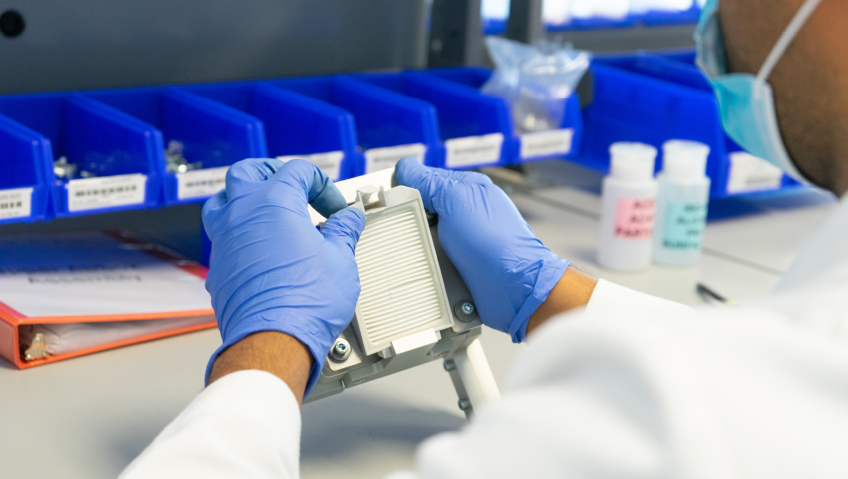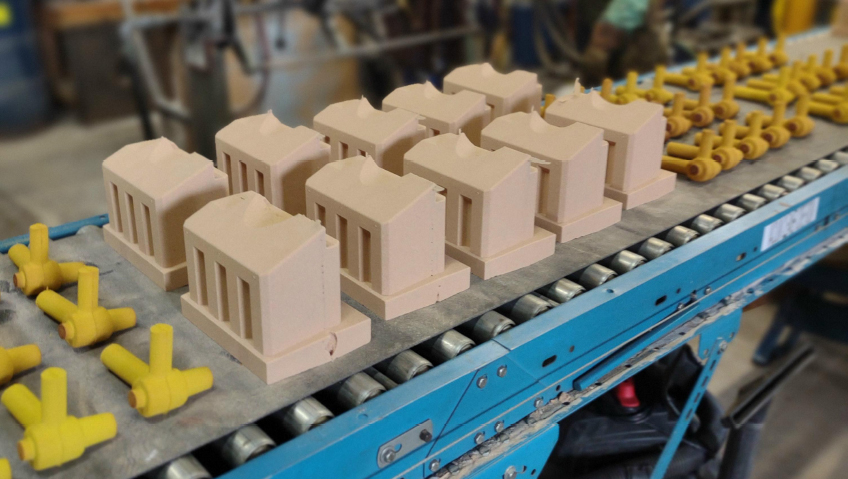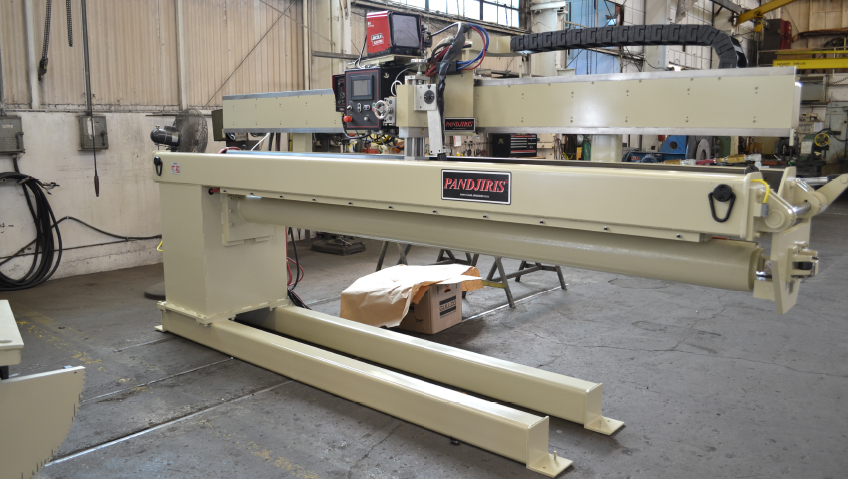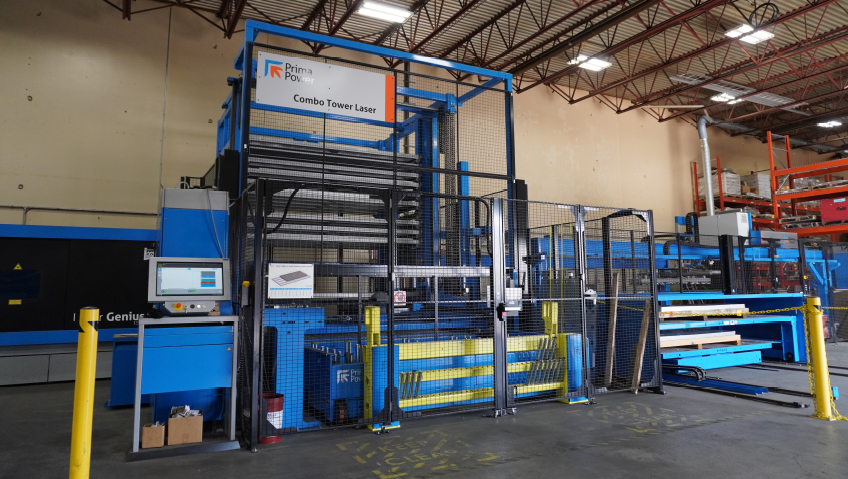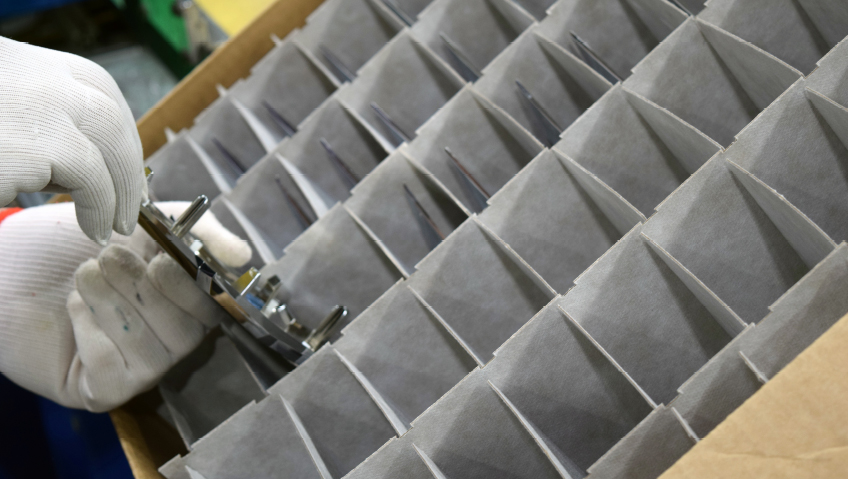As the world approaches the second anniversary of the start of the COVID-19 pandemic, Anthony Khoraych looks back on the past months as both a challenge and a once-in-a-lifetime learning experience for Advanced Test and Automation (ATA).
President and Chief Executive Officer of ATA, the Ontario, Canada-based business he founded in 2005, Khoraych and his team have faced tight deadlines over the years, but none as urgent as those encountered during the worst pandemic in a century.
During the first few months of COVID, federal and provincial governments across Canada put out the call for manufacturers to make products to aid doctors, nurses and first responders battling the deadly virus. Some went from making hockey masks to protective face shields, while others began manufacturing millions of protective medical masks.
It was truly a time when the nation came together for the greater good of humanity.
Experts in providing turnkey technologies to quantify physical characteristics such as flow, pressure, torque, speed, voltage and current, ATA, from its base in Milton, Ontario, was well-known for its work in the automotive, off-highway, aerospace, and industrial fields, and other sectors where monitoring and manipulating flow is critical.
Once the seriousness of COVID-19 became apparent, ATA was quick to focus its expertise on much-needed, life-saving ventilators.
Ventilators, essential for those who had contracted the virus and were struggling to breathe, were in short supply for the first few months of the pandemic. One company called upon to help was StarFish Medical, Canada’s largest designer, developer and contract manufacturing company.
Once ATA was involved with StarFish – through Next Generation Manufacturing Canada (NGen) which provides project funding, collaboration opportunities and workforce development – the two companies worked together to speed-up testing. This also saw ATA expand its abilities to the manufacture of medical devices.
Out of necessity, ATA transformed part of its facility into a clean room, and, responding to urgent calls, used its knowledge of pneumatics, electromechanical design, product testing and manufacturing to create the pneumatic module for The Winnipeg Ventilator in mid-June 2020. The Government of Canada ordered 7,500 units.
Program Manager at StarFish Medical, Alexander Shvartsberg, said at the time in a media release that “ATA has been instrumental in accelerating the design, procurement, and manufacturing processes of this project. Their expertise in pneumatics and testing, working with StarFish engineers, has enabled us to develop the prototypes we need and meet our internal milestones on time.
“ATA has really stepped up to help us meet our ambitious goal of developing a quality ventilator in a matter of weeks.”
Reflecting on the incredible challenges and timelines facing the business since the pandemic, Khoraych is rightfully proud of ATA’s unified team effort, and how it moves seamlessly in bold new directions as the COVID crisis requires.
“The company was able to rise to the challenge,” says Khoraych of ATA, which soon went from under 20 staff to over 40 to keep up with demand for its oxygen mixing module for ventilators. “As our government had a call to action, we feel honoured we assisted.”
Stepping up immediately into an industry relatively unfamiliar to the company, ATA gained new, comprehensive skills in design cycles and manufacturing, and underwent a valuable masterclass in the differences between the medical industry and the automotive, its original field of experience.
Harnessing its learnings from the StarFish Medical collaboration, ATA today incorporates that newfound knowledge into its business.
Although, prior to COVID, the company was primarily making test machines that dealt with flow, the experience has taught ATA how to also help clients today with the design and prototype of parts that need testing, a much broader spectrum, and how to build special equipment for validation.
“It has been great, especially when a company is stuck like StarFish was,” he says. “They were behind schedule and had run out of options when we came in and responded very quickly.”
Since working with StarFish on the ventilator project, ATA has been approached by other companies for its expertise in measuring air levels in fluids, acquired through its experiences in the automotive sector.
Recently, a major European medical device manufacturer contacted the company for help with flow-related measurement problems, “for which we have a unique sensing technology that we are bringing over from automotive,” says Khoraych. Even though ATA has developed new opportunities in the medical field, the company is still active in the automotive industry.
Building a new team to handle the emerging medical side of the business, the company also created a new website around September 2020 called ATA Create (www.atacreate.com). Among its many capabilities are design, manufacturing, prototyping, testing, and design for manufacturing (DFM).
Although the pandemic presented many challenges to ATA, it has also generated opportunities to learn. One was working with major Canadian multinational electronics manufacturer Celestica Inc., who began manufacturing ventilators for StarFish.
Active in LEAN manufacturing production methods aimed at reducing production system times and reducing waste, Celestica invited ATA to inspect their facility and observe their systems and processes in action, learning about software, shift work, documentation and more.
“So when we need to scale up again, we’ll have all that experience of doing it on tight timelines, but we will be able to plan for it in a structured way,” says Khoraych.
The result for ATA has been a greater knowledge and better understanding of how inventory and workstations are handled, along with how different roles can be better executed, including those of operators, quality teams, and shipping and receiving.
Praised for its efforts – including in a letter from Prime Minister Justin Trudeau last November, expressing his gratitude and thanking the company for helping produce ventilators – ATA is grateful for the experiences of the past two years, and welcomes the opportunity to better grow the business.
Internally, President and CEO Khoraych says he is building a leadership team that can respond to future challenges, as ATA did with building ventilators.
He is looking at hiring best-in-class people to complement the existing team and create “horsepower capability” with a focus on design, prototyping and building components that make a difference in flow monitoring and controlling applications. He also speaks of expanding sensor technologies and introducing them to other industries.
Currently hiring, he says ATA is looking to grow by 50 percent.
ATA is also planning investments in facility and facility-related infrastructure/hardware, as customers come back online in a post-COVID world. The company is keeping an eye out for another facility to meet the future needs of the company and its clients.
Despite growth, success, and expansion into the medical device marketplace, Advanced Test and Automation is still true to its mobility and industrial roots, including net-zero enabling technologies. Traditionally putting together test systems, Khoraych says he sees ATA heading into design and prototyping of net-zero enabling components.
While not there yet, the company is already active in lubrication-based components to boost the efficiency of very large hydraulic equipment. With this kind of equipment consuming extravagant amounts of power, ATA can help customers realize efficiency gains of 30 percent, which can be applied to the mobility and industrial markets.
“Because of the ventilator aspect – where we designed, prototyped and tested under one roof – we’re taking that model back to components in the mobility and industrial space, and that’s coming back stronger than just doing the test.”
Proud of the outstanding achievements of his team in one of the most unsettling periods in modern history, Khoraych says he will remember the ventilator project for its sense of purpose.
“It was so easy to hire people – some of the best people out there – because we were doing something to help our country to respond to an imminent threat,” he says. “That purpose, that passion, was very exciting. It was great to have people join, and they saw that vision, that purpose.”

